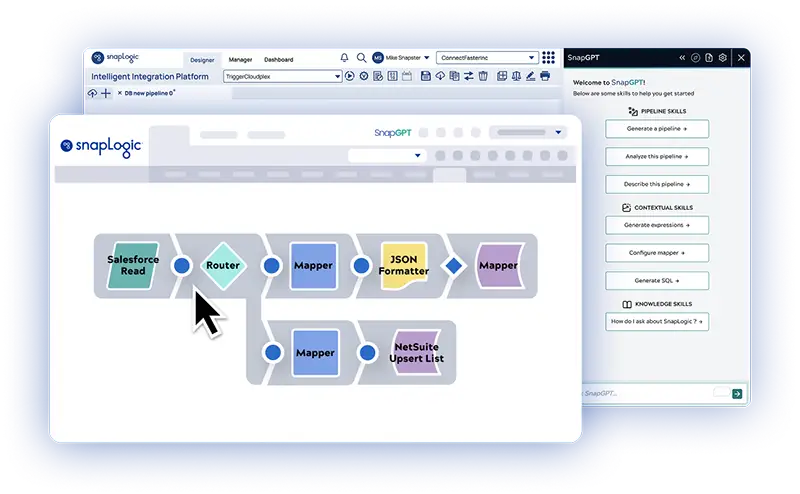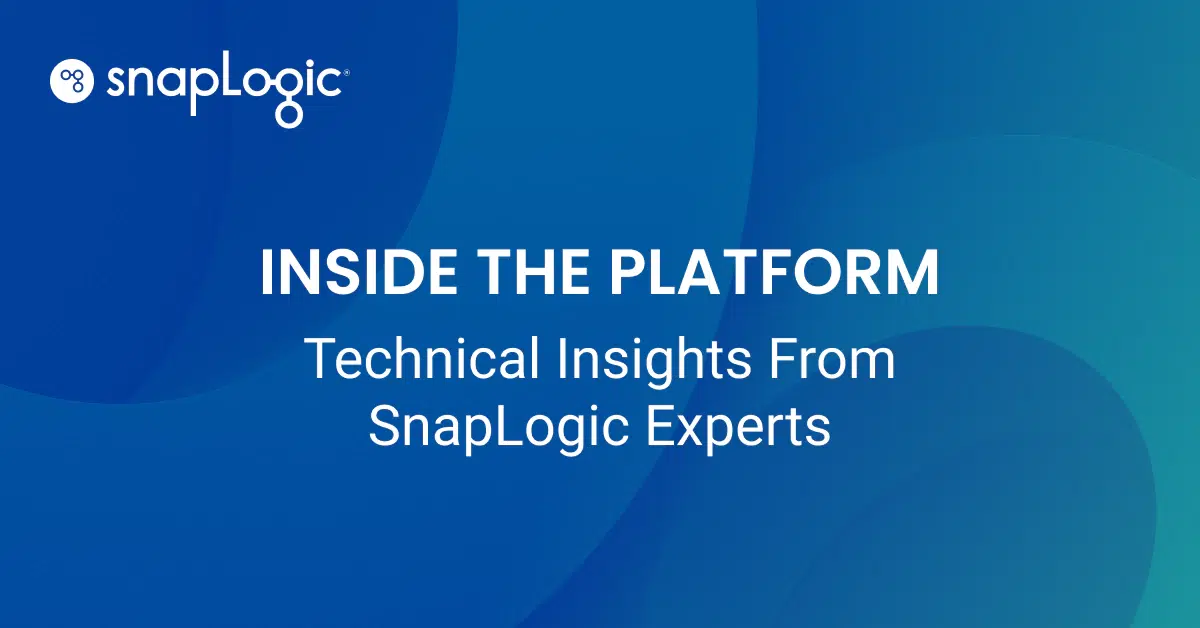Every digital transformation starts with a simple truth: you can’t innovate on bad data. Before your organization can take advantage of next-generation analytics or AI, your data must be migrated securely, cleanly, and completely to modern systems.
This post explores why data migration is the foundation of modernization, what’s at stake, the tools available, and how to do it right.
What is data migration?
Data migration is the process of transferring data from one system, application, or storage environment to another. This could mean moving from on-premises to cloud, shifting from one database engine to another, consolidating multiple data stores after a merger, or reorganizing how data is stored and accessed.
It is distinct from integration (which involves connecting and synchronizing systems) or replication (which duplicates data). Migration typically means a one-time, or large-scale shift of data and the associated preservation of data quality, structure and business logic.
Different types of migration include:
- Storage migration (e.g., moving files or blobs to cloud storage)
- Database migration (changing database engines or versions)
- Application or business-process migration (shifting ERP, CRM or other operational systems)
- Cloud migration (moving legacy systems or data warehouses to cloud platforms)
Why data migration matters for modernization
When organizations modernize their technology stack, data migration plays a central role. Here are the key reasons it matters:
Enabling innovation and analytics
Legacy systems often lock data into outdated formats, silos or infrastructures that hamper access and analysis. By migrating data into modern, accessible systems, you unlock the ability to apply analytics, automation or AI. Without clean, accessible data, modern services stall.
Improving agility and flexibility
Modern platforms (whether cloud, microservices, data lakes or composable architectures) allow organizations to respond faster to business change. But this agility is only possible when your data has been migrated and re-architected appropriately.
Reducing risk and technical debt
Legacy systems come with maintenance burdens, costly infrastructure, lack of support and often hidden data issues (e.g., duplicates, stale records, inconsistent schema). Migration lets you retire or modernize these systems and reduce risk and save the costs of maintaining obsolete systems.
Ensuring compliance and governance
As data regulations tighten (GDPR, CCPA, etc.) and business demands increase for lineage, auditability and transparency, modern systems provide the controls and visibility needed. Migration is often the moment to enhance governance, clean data, and ensure accountability.
Building the foundation for AI-ready operations
If your organization plans to adopt AI, machine learning, or automation, you must build on a stable, well-migrated data foundation. In other words: you cannot plug AI into a fragmented legacy environment and expect reliable output.
Common data migration challenges
Even though data migration is critical for modernization, many initiatives face significant challenges that can cause delays or failures, making it essential to anticipate and plan for these common pitfalls.
Common data migration challenges include:
- Poor data quality: organizations struggle with issues like duplicates, inconsistent formats, or missing metadata, which significantly complicates the migration process
- Complexity of mapping and transformation: mapping data from source to target systems, applying necessary transformations, and preserving original business logic can be highly complex
- Risk of operational disruption: downtime or operational disruption during the migration process adds a significant layer of risk
- Lack of automation: over-reliance on manual processes increases the potential for errors, data loss, or corruption
- Difficult validation: even after migration, verifying that the data is accurate, complete, and ready for use is a difficult step
- Governance and documentation issues: insufficient governance and poor documentation can make compliance, auditing, and overall process management more challenging
Anticipating these common pitfalls and addressing them early in the planning process is essential to minimizing risk and ensuring a smooth, successful migration.
Best practices for a successful data migration
Here are some recommended steps for a successful data migration in a modernization context:
- Define clear objectives: which systems are being migrated, what constitutes success (data accuracy, downtime, cutover timeline)
- Audit and clean data first: before moving, uncover duplicates, stale data, and inconsistent formats and resolve them
- Map data logic and transformations: document how data will change, flow and what business logic applies
- Automate where possible: use tools that enable automated mapping, validation, error-handling and monitoring
- Validate and reconcile: after migration, run checks to ensure completeness, accuracy and performance
- Plan cutover and fallback: ensure minimal downtime and have a rollback plan if anything goes wrong
- Govern and document: maintain audit logs, record transformations, and ensure visibility for compliance
- Decommission legacy systems: once migration is successful and validated, retire old systems to capture benefits fully
The list: top data migration tools
As you select a platform to support your migration, here are some of the leading solutions in the marketplace.
SnapLogic
SnapLogic’s integration platform as a service (iPaaS) delivers powerful, end-to-end migration capabilities designed for hybrid and multi-cloud environments. The platform automates the most complex stages of data migration, from discovery and mapping to transformation, validation, and load, helping organizations move large volumes of data securely and with minimal downtime.
AWS Database Migration Service (AWS DMS)
A cloud-native service from Amazon Web Services, AWS DMS supports heterogeneous database migrations with minimal downtime and continuous replication. Generally used in AWS-centric environments.
Microsoft Azure Data Factory / Azure Migration Tools
A managed ETL/data-integration service from Microsoft Azure, Azure Data Factory (and related migration tools), provides connectivity, graphical pipelines, and orchestration for Azure-first ecosystems.
Talend Data Fabric
Talend provides an end-to-end platform that covers ingestion, transformation, quality, and governance. It remains strong for organizations with complex transformation needs.
Fivetran
Fivetran is known for its managed, no-code connectors and ability to ingest data from many sources into modern analytics/data warehouse systems. It’s often used for migration to cloud warehouses.
Matillion
Matillion builds pipelines into cloud warehouses like Snowflake, BigQuery and Redshift; it’s purpose-built for migration into those environments and supports both extraction and transformation.
How to pick the right data migration tool
Selecting the right data migration platform can make or break your modernization effort. Look for a solution that not only moves data but also supports transformation, governance, and long-term integration goals.
Here’s what to prioritize:
- Comprehensive connector coverage: native integration with all your systems, whether cloud, on-premises, or SaaS, so no source or destination is left behind
- Built-in transformation and data quality: automated schema mapping, format standardization, and validation to ensure accuracy and consistency
- Automation and real-time monitoring: tools that streamline repetitive tasks, detect issues early, and validate successful transfers while minimizing downtime
- Change Data Capture (CDC): for continuous data synchronization and zero-disruption migrations
- Governance and lineage tracking: full visibility into data movement for compliance, auditing, and long-term trust
- Future alignment: the best tools go beyond migration, enabling automation, analytics, and AI initiatives once data is in place.
Migrate and modernize
When enterprises modernize their data stack, the data isn’t the only roadblock. It’s also the legacy integration logic that holds it all together. The SnapLogic Intelligent Modernizer (SLIM) helps organizations migrate away from legacy ETL and integration platforms like Informatica PowerCenter or IBM DataStage and rebuild those integrations in a modern, cloud-native iPaaS environment.
SLIM uses AI to analyze, map, and modernize existing integrations. Instead of simply “lifting and shifting” old jobs, it reconstructs them using SnapLogic’s native visual pipelines, removing technical debt, reducing risk, and dramatically cutting migration costs and timelines.
Key advantages of SLIM:
- Accelerated migration from legacy ETL tools through AI-assisted analysis and automation
- Cost-efficient modernization by eliminating redundant or obsolete integrations
- Future-ready architecture built on SnapLogic’s unified iPaaS, supporting both data and application integration
This makes SLIM especially valuable for enterprises undertaking large-scale digital transformation initiatives where integration modernization is a prerequisite for AI, analytics, or composable enterprise goals.
Migration as a foundation for the composable enterprise
Migrating your data is the foundational step in enabling a composable enterprise. By moving your data into modern, flexible platforms, companies enable the modular assembly of applications, analytics, processes and automation.
Once your data resides in a modern architecture, you can:
- Link disparate applications with real-time data flows
- Deploy AI or ML models on unified, high-quality datasets
- Continuously iterate and extend capabilities rather than being locked into legacy monoliths
For enterprises moving toward agentic, AI-ready platforms, or embracing the full promise of services like SnapLogic’s, data migration isn’t just preparatory; it’s strategic.
What to do next
If you’re modernizing your technology stack, investing in new platforms or envisioning AI-driven workflows, then data migration deserves your full attention. Done right, it unlocks innovation, reduces risk, and sets the stage for continuous modernization. Done poorly, it becomes a bottleneck, risk point, and cost center.
Start now by:
- Defining your migration scope and success criteria
- Auditing your data and cleaning up before moving
- Choosing a migration tool that fits your architecture and future vision
- Ensuring governance, validation and minimal business disruption
And if you’re looking for an integration platform that does more than just migration, but one that supports ongoing connectivity, automation and composable architecture, let’s discuss how SnapLogic can help deliver that vision.










